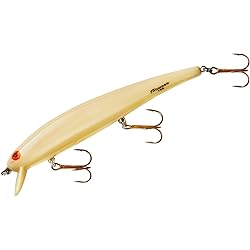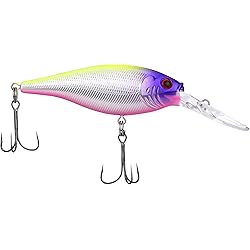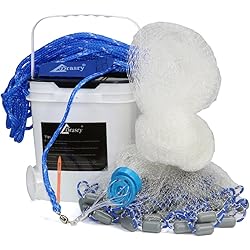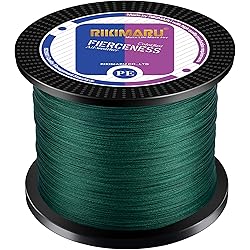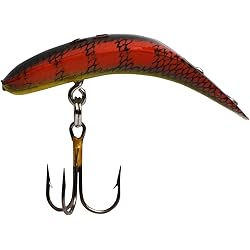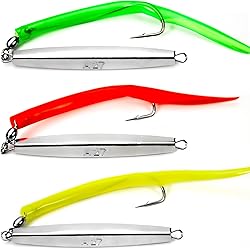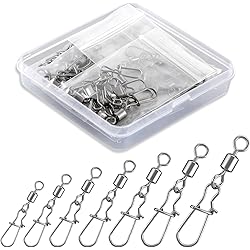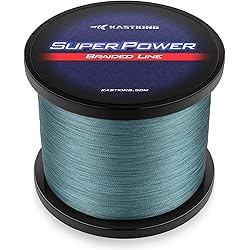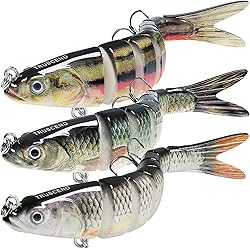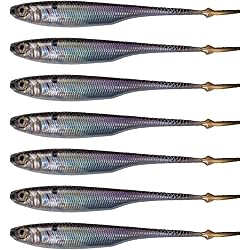Top 10 Freshwater Fish, Worldwide, millions of people love to go freshwater fishing as a hobby. The rush of landing a monster catch is unmatched, regardless of experience level.
Freshwater fish species variety provides a multitude of fishing experiences, ranging from the serene chase of trout in a mountain stream to the exhilarating thrill of landing a largemouth bass in a thicket of weeds.
This article will examine the top 10 freshwater fish, providing information on their traits, habitats, and reasons why fishermen like them.
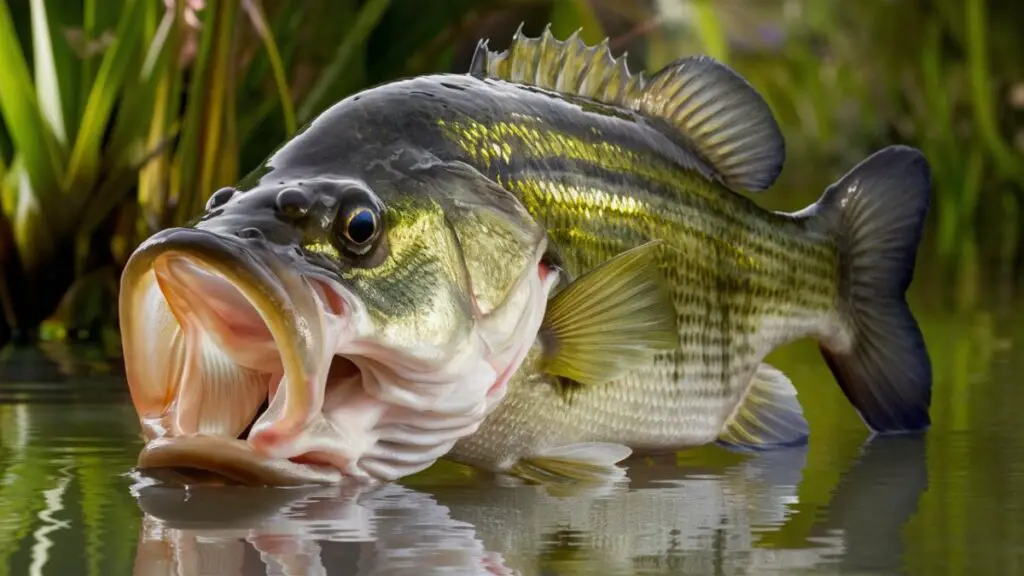
1. Largemouth Bass
The largemouth bass (Micropterus salmoides) is arguably the most iconic freshwater fish in North America. Known for its aggressive behavior and acrobatic fights, it is a favorite among sport fishermen.
Description: The largemouth bass is characterized by its large mouth, which extends past its eyes, and a robust, elongated body. Its coloration ranges from green to olive, with a dark lateral stripe running along its sides.
Largemouth bass inhabit a variety of freshwater habitats such as lakes, ponds, rivers, and reservoirs. They prefer warm, slow-moving waters with plenty of vegetation, which provides cover and hunting grounds.
Fishing Techniques: Anglers use a variety of techniques to catch largemouth bass, including using plastic worms, crankbaits, and spinnerbaits. Topwater lures are also popular, especially during the early morning and late evening when bass are most active.
Culinary Value: Sport fishermen often release largemouth bass to maintain the population, despite their edible nature and mild flavor.
Interesting Facts: People have introduced largemouth bass to waters outside of their native range, including those in Japan and South Africa, due to their high adaptability.

2. Smallmouth Bass
The smallmouth bass (Micropterus dolomieu) is a close relative of the largemouth bass but offers a different fishing experience due to its habitat and behavior.
Description: Smallmouth bass are smaller than their largemouth counterparts, with a bronze or brownish coloration and a smaller mouth that does not extend past the eyes.
Habitat: They thrive in cooler, clearer waters, such as rocky lakes and streams. Often found in deeper water than largemouth bass, smallmouth bass exhibit a preference for areas with a rocky substrate.
Fishing Techniques: Popular techniques include using jigs, soft plastics, and crankbaits. Smallmouth bass are known for their strong fighting ability, making them a favorite among anglers seeking a challenging catch.
Culinary Value: Anglers often release smallmouth bass, despite their edible nature, similar to largemouth bass. Their meat is firm and flavorful.
Interesting Facts: Smallmouth bass are sometimes referred to as “bronze bass” or “brown bass” due to their coloration.
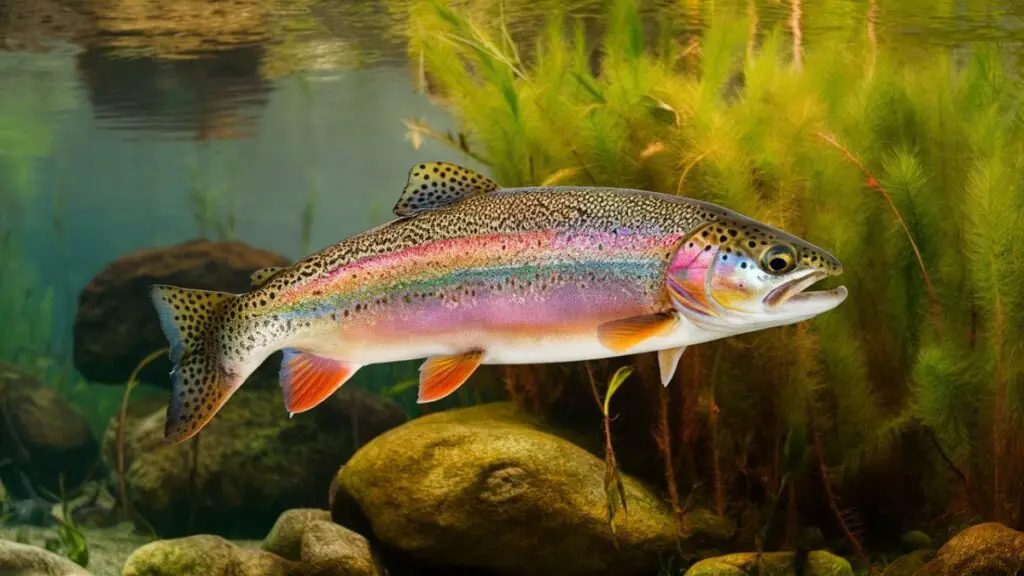
3. Rainbow Trout
People prize rainbow trout (Oncorhynchus mykiss) for their beauty, fighting spirit, and delicious taste. They are a staple in many freshwater fisheries.
Description: Rainbow trout have a distinctive pink or red stripe along their sides, with a silvery body covered in black spots. They can vary significantly in size depending on their environment.
Habitat: Native to cold-water rivers and lakes in North America, these fish have undergone global introductions. They prefer clear, oxygen-rich waters with temperatures between 50 and 60°F.
Fishing Techniques: Fly fishing is a popular method for catching rainbow trout, but you can also use spinning gear with lures or live bait. They are known to be finicky eaters, making them a challenging catch.
Culinary Value: The delicate, flaky meat and mild flavor of rainbow trout make them highly valued. People commonly prepare them by baking, grilling, or smoking.
Interesting Facts: Steelhead trout, essentially the same species as rainbow trout, migrate to the ocean before returning to freshwater to spawn.
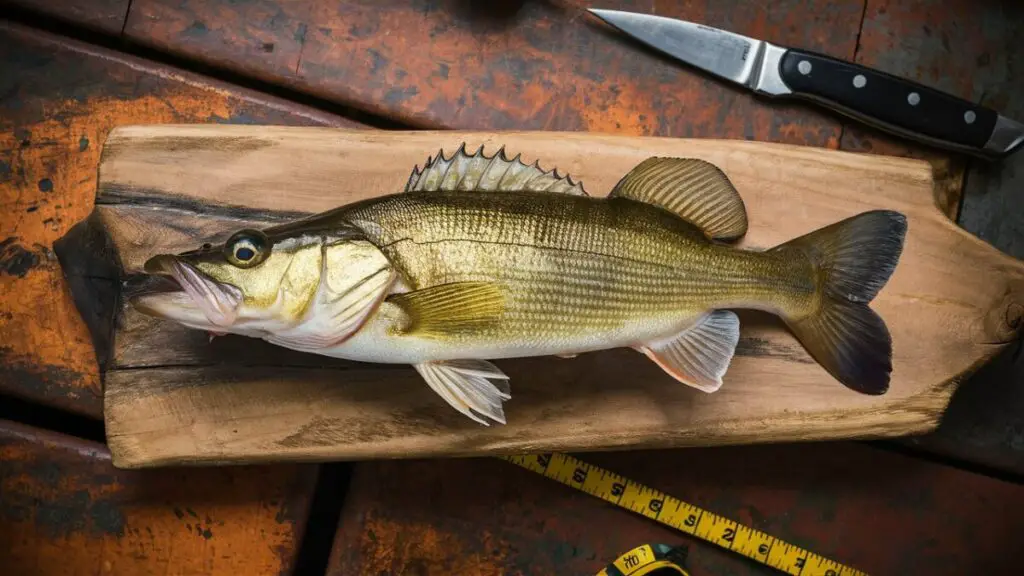
4. Walleye
Walleye (Sander vitreus) are renowned for their excellent taste and challenging catch, making them a favorite among both sport and commercial fishermen.
Description: Walleye are identifiable by their large, glassy eyes and long, slender bodies. They have a golden-brown coloring with darker markings on their backs.
Habitat: They inhabit large lakes and rivers in North America, preferring deep, cool waters with rocky or sandy bottoms. Walleye are nocturnal hunters, so nighttime fishing is particularly productive.
Fishing Techniques: Anglers often use live bait such as minnows or leeches, as well as lures like jigs and crankbaits. Trolling is a common technique, especially in large bodies of water.
Culinary Value: Walleye are considered one of the best-tasting freshwater fish. Their firm, white meat is mild and versatile, suitable for frying, baking, or grilling.
Interesting Facts: Due to their special adaptation for low light, walleyes are most active at dawn, dusk, and night.
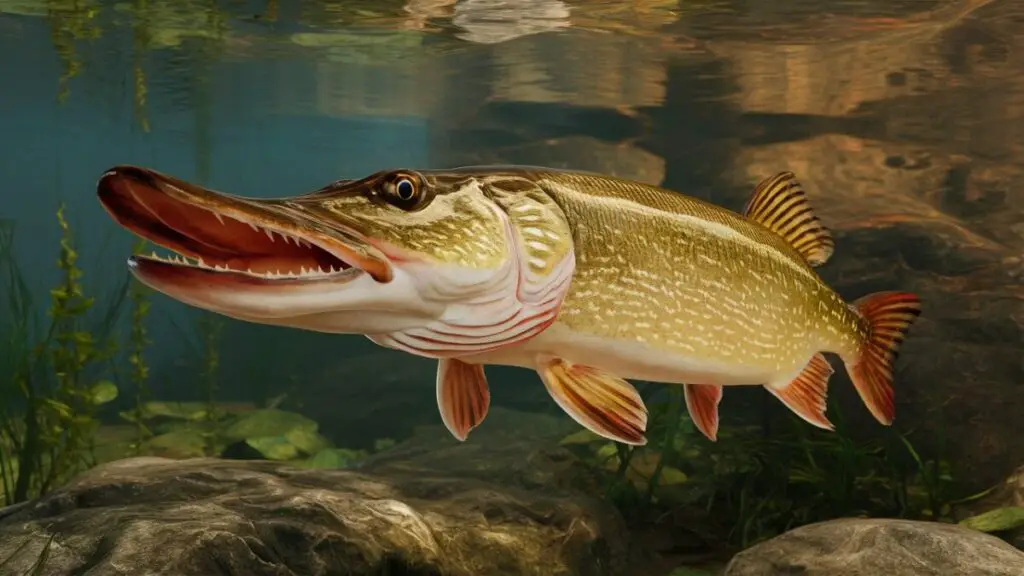
5. Northern Pike
Northern pike (Esox lucius) are known for their aggressive nature and formidable size, making them a thrilling catch for anglers.
Description: Northern pike have long, torpedo-shaped bodies with olive-green coloration and lighter, white spots. They have sharp teeth and a distinctive elongated jaw.
Habitat: Pike inhabit freshwater lakes, rivers, and marshes throughout the Northern Hemisphere. Pike prefer clear, slow-moving waters with plenty of vegetation.
Fishing Techniques: Because of their predatory nature, people often catch pike using large, flashy lures or live bait like minnows. They are known for their powerful strikes and strong fights.
Culinary Value: Pikes are edible and have firm, white flesh. However, they have numerous small bones, which can make them challenging to prepare.
Interesting Facts: Northern pike are known as “water wolves” due to their predatory habits, and they are capable of rapid bursts of speed when hunting.

6. Bluegill
Bluegill (Lepomis macrochirus) are a popular panfish known for their abundance and accessibility, making them a favorite for beginner anglers and children.
Description: Bluegills are small, round fish with a dark blue or greenish hue on their bodies and a distinctive dark spot at the base of their dorsal fin.
Habitat: Warm, slow-moving waters such as ponds, lakes, and rivers are commonly home to bluegill. Bluegill prefer areas with plenty of vegetation, where they can hide and feed.
Fishing Techniques: You can catch bluegill using a variety of methods, such as using live bait like worms or crickets, as well as small lures and flies. People often use simple tackle, like a light rod and reel, to catch them.
Culinary Value: Bluegills are considered good eating, with a mild flavor and firm texture. They are often fried or pan-seared.
Interesting Facts: Bluegill are known to spawn multiple times throughout the warm season, making them a reliable catch year-round.

7. Catfish
Catfish are a diverse group of fish known for their whisker-like barbels and smooth, scaleless bodies. They are a popular target for both sport and commercial fishing.
Description: There are many species of catfish, but they typically have a broad head, wide mouth, and whisker-like barbels around the mouth. Their coloration can vary widely.
Habitat: Freshwater habitats such as rivers, lakes, and ponds are home to catfish. They typically inhabit muddy or turbid waters as bottom dwellers.
Fishing Techniques: Common methods for catching catfish include using live bait, such as worms, minnows, or prepared baits. We also target catfish with jug fishing, trotlines, and noodling.
Culinary Value: Catfish are a popular food fish, particularly in the Southern United States. People often fry, grill, or bake them due to their mild, sweet flavor.
Interesting Facts: Some species of catfish can grow to enormous sizes, with the largest individuals weighing over 100 pounds.
Top 10 Freshwater Fish

8. Crappie
Crappie (Pomoxis spp.) are popular panfish known for their delicious taste and abundance in freshwater bodies.
Description: There are two main species of crappie: black crappie and white crappie. Both have a distinctive body shape with a large dorsal fin and silvery coloration, but black crappies have more pronounced spotting.
Crappies inhabit lakes, rivers, and reservoirs throughout North America. They prefer calm, clear waters with plenty of cover, such as submerged trees or vegetation.
Fishing Techniques: Anglers often use small jigs, minnows, or soft plastics to catch crappie. They are particularly active during the spring breeding season.
Culinary Value: Crappies are highly regarded for their delicate, flaky white meat. People often fry them, making them a favorite for fish fries.
Interesting Facts: Crappies are schooling fish, which means you can often find them in large groups. Finding a school can result in highly productive fishing trips.

9. Muskellunge (Muskie)
The muskellunge (Esox masquinongy), or muskie, is a top predator in many freshwater systems and is highly sought after by trophy anglers.
Description: Muskies have a long, slender body with a sharp, pointed head and a mouth full of sharp teeth. They are typically greenish-brown with light vertical markings.
Habitat: Muskies inhabit large rivers and lakes, often preferring clear, deep waters with abundant vegetation. They are ambush predators, often lying in wait near structures.
Fishing Techniques: Catching muskies requires heavy tackle and large lures, such as crankbaits, bucktails, and jerkbaits. They are known for their explosive strikes and powerful fights.
Culinary Value: Muskies are edible, but because they are a top predator and crucial to the ecosystem, anglers frequently release them.
Interesting Facts: Muskies are known as the “fish of 10,000 casts” due to their elusive nature and the difficulty of catching them.
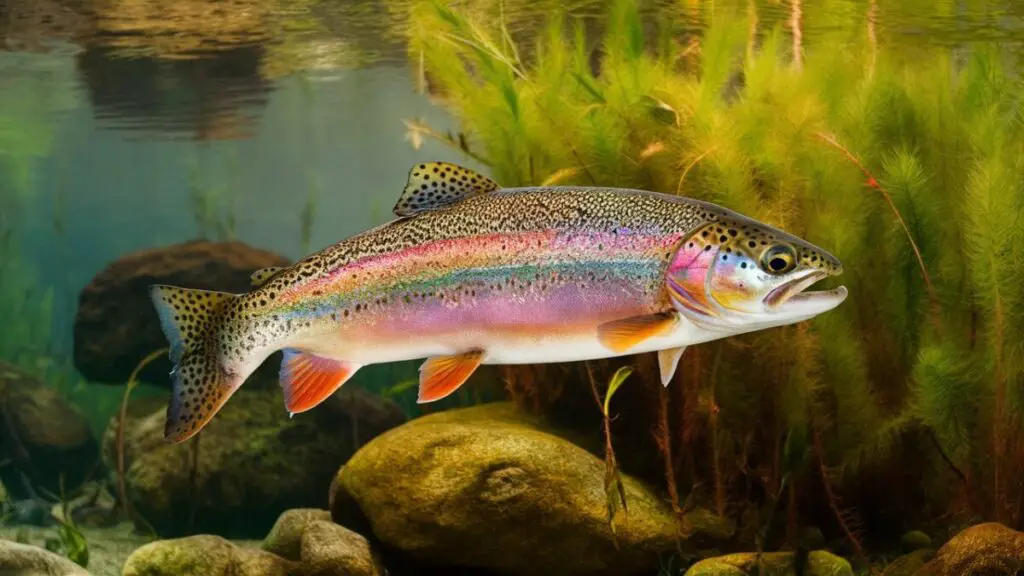
10. Brook Trout
Brook trout (Salvelinus fontinalis) are a beautiful and prized freshwater fish, especially among fly fishermen.
Description: Brook trout have a dark green or brown body with distinctive yellow and red spots, often surrounded by blue halos. Their bellies can be bright red or orange, especially during the spawning season.
Habitat: Brook trout are native to small, cold-water streams and lakes in the Eastern United States and Canada. They require clean, well-oxygenated water to thrive.
Fishing Techniques: The most popular method for catching brook trout is fly fishing, but you can also use spinning gear with small lures or live bait. They are known for their aggressive strikes and acrobatic fights.
Culinary Value: Brook trout are considered excellent table fare, with a delicate flavor and fine texture. People often prepare them by baking, grilling, or frying.
Interesting Facts: Brook trout are actually a type of char, not a true trout. They are sensitive to environmental changes and are considered an indicator species for water quality.
Conclusion
Freshwater fishing offers a diverse and rewarding experience for anglers of all skill levels.
From the aggressive largemouth bass to the elusive muskie, each species presents its own unique challenges and rewards.
Whether you’re fishing for sport, for food, or simply for the enjoyment of being outdoors, the top 10 freshwater fish provide endless opportunities for adventure and exploration.
So grab your fishing gear, head to your favorite spot, and see what you can catch!
Hooked on Tech: Exploring the latest Fishing Gadgets that Anglers swear by.
In the realm of angling, where tradition and technology often converge, a new wave of fishing gadgets has emerged, transforming the way anglers approach their craft.
From advanced fish finders to smart bait systems, these innovations have not only revolutionized the fishing experience but have also garnered a loyal following among anglers worldwide.






